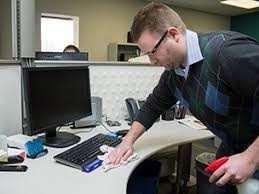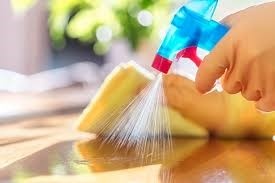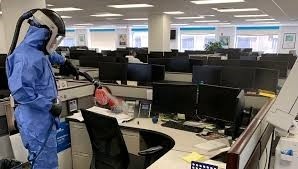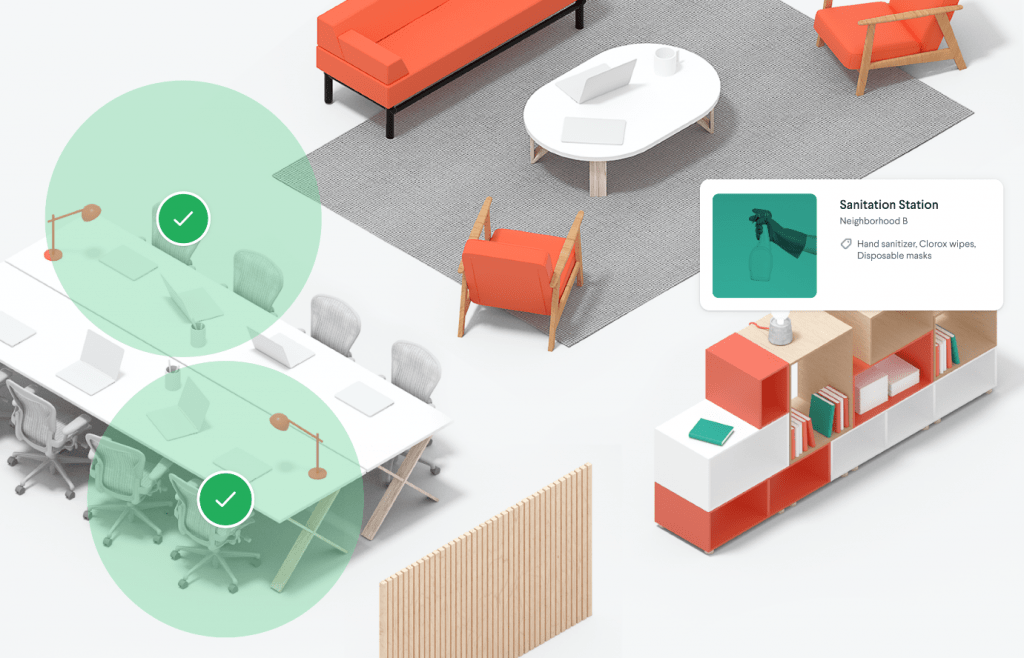7 Steps to Disinfect your Office Furniture and Chairs

We all know that how important disinfectant, sanitisation and cleaning is a mandate of precautionary measures against Covid 19, it is equally important to understand their literal meaning and their effects on the materials in an office set up. Covid 19 has drastically changed our style of living or working whether we are working from home or from office. It is important that we understand the disinfectant process. The highly premium ergonomic set up n the office has to be clean and disinfected properly First, we need to understand the difference between cleaning, sanitising and disinfecting.

Cleaning involves removing visible soil and nonvisible microbes (e.g., bacteria, viruses, and protozoa) from an area or object. Cleaning typically involves mechanical action (i.e., wiping or scrubbing) and use of a general cleaner such as soap and water. Cleaning does not usually kill microbes, but instead reduces their presence by removing them. The number of microbes removed from a table surface or the chair is somewhat dependent on the type of material and product used to clean the area.

Sanitization involves killing microbes on a surface or object. The goal of sanitization is not to completely eliminate all microbes, but to reduce them to a level that will reduce the potential for an infection to occur. Desks and the chairs should be cleaned before being sanitized. Sanitizers must be in contact with a surface or chair for a certain amount of time (called “dwell” time) in order to more effectively kill certain microbes.

Disinfection like sanitization, disinfection also involves killing microbes on a surface or object. While disinfectants generally kill more microbes than sanitizers. They reduce the number of microbes so that it is safer for human contact. This reduces inhibition of the disinfectant by soil or other organic material. As with sanitizers, the amount of time the disinfectant is in contact with the surface (i.e., “dwell” time) is important to be more effectively reduce microbes.
Disinfection practices are important to reduce the potential for COVID-19 virus contamination in non-healthcare settings, such as in the home, office, schools, gyms, publicly accessible buildings, faith-based community centres, markets, transportation and business settings or restaurants.

High-touch surfaces in your ergonomic office settings should be identified for priority disinfection such as worksurfaces, chairs, personal computer, laptop, keyboards, door and window handles, touchscreen personal devices, personal computer keyboards, and work surfaces. Though disinfecting the furniture is the need of the hour. As per reports, the novel coronavirus can live up to four days on wooden surfaces and five days on metal surfaces. Health experts recommend frequent cleaning of touched surfaces with disinfectants to reduce the risk of spreading infection. Most household disinfectants are effective on hard surfaces such as counters, tables, doorknobs, light switches, handles, desks, toilets, taps and sinks, while thorough handwashing, proper usage of masks and hand sanitisers ensure personal protection.
7 Steps to be followed while sanitising or disinfecting your office furniture:
1.Start with vacuum-cleaning upholstered surfaces in the seating area-Upholstery fabric is usually colour-fast and can be washed with detergent. Organic solvents, should be tested on an inconspicuous spot before use. If the surface or area is not cleaned properly, then the disinfectant will have no effect on the virus. Also, the disinfectant will combine with the dust or soil and leave a permanent spot on the fabric or mesh. Allow the chair or sofa to air-dry. It is very critical to wipe dry the metal part, if not then it will rust the metal. We all understand the importance of how an ergonomic chair is important for a comfortable working experience whether your working from home or from office and therefore it is equally important to correctly disinfect them.
2. To disinfect table surfaces, use a spray-on- Select a disinfectant comprising a two-to-one ratio of 60 to 90 per cent rubbing isopropyl alcohol to water. You can also mix seven grams of bleaching powder to one litre of water to make an effective disinfectant.
3. Wipe down tabletops, end tables, wooden arms and other hard surfaces of your furniture with a cloth soaked in the homemade disinfectant to sanitise them. The surface should stay wet for at least a minute to fully disinfect the piece. Wiping down desk surfaces once or twice a week is very important. Be extra careful with furniture having multiple coats of finish or the kind of laminate it is, it can be damaged by repeated application of harsh detergents or alcohol-based disinfectants. So, ensure you do not go overboard with disinfecting such sensitive surfaces.
4. How to disinfect properly? Hold the bottle six to eight inches from the furniture and spray the piece until it is covered with a light mist. Let it stay for a couple of minutes and then wipe dry or air dry or else it might damage the surface.
5. For metallic or powder coated surfaces like base of your office chair, under structure of workstation, door handles, security locks, and keys, alcohol can be used to wipe as bleach is not suitable.
6. Work in sections. Spray the solution onto the furniture and wipe the area with a dampened cloth to sanitise the surface. If it gets too wet or too dirty, squeeze out the cloth as you go along.
7. Ventilation is very critical when cleaning and disinfecting products. Sunshine and clean air can work wonders, and the ultraviolet rays kill a lot of other bacteria and germs. Keep your movable furniture in the sun for a few hours to get rid of any foul smell. Make sure you don’t keep any wooden furniture in the sun for long hours to avoid any fading or discolouration. Open windows and use fans to ventilate while the time of disinfection
In indoor spaces, routine application of disinfectants to surfaces via spraying is not recommended for COVID-19. If disinfectants are to be applied, these should be via a cloth or wipe which is soaked in the disinfectant.
All disinfectant solutions should be stored in opaque containers, in a well-ventilated, covered area that is not exposed to direct sunlight and ideally should be freshly prepared every day. Where cleaning and disinfection are not possible on a regular basis due to resource limitations, frequent hand washing and avoiding touching the face should be the primary prevention approaches to reduce any potential transmission associated with surface contamination.
It is important to reduce your risk when using disinfectants as they are critically harmful for health system and one has to take all precautionary measures like wearing gloves, masks while the process of disinfection and wash hands properly post the job done.
To learn more about how our company can help with the ideas to create your new workplace and foster innovation and organizational growth, write to us at: https://magnum-sadoshima.com/contact-us/
Email : crm@magnum-sadoshima.com
Mobile: 08506086909
Continue reading our Blog section: https://magnum-sadoshima.com/blog-list/
See our entire office furniture range: https://magnum-sadoshima.com/office-furniture/


No Comments